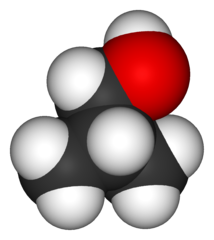This post is contributed by Joseph Grimaldi (RPI)

The growing demand for carbon-neutral energy sources has fueled the search for biologically derived products. While the predominant liquid fuel is gasoline1 the search is on for biofuel alternatives, but many pose considerable challenges. Currently ethanol is the most widely used biologically generated fuel. Ethanol, however, is difficult to transport in pipelines and also contains just 70% of the energy content of gasoline.2 The United States has over 95,000 miles of pipelines and more than 160,000 filling stations with storage tanks. Hence, transportation and storage are crucial factors when considering which biologically derived fuels could suitably replace gasoline.1
Ethanol
One of the challenges facing ethanol as a possible alternative is that it has a low density and is hydroscopic, so it cannot be easily piped.3 Another problem is that the production of ethanol is based on a limited number of agricultural resources, such as corn and sugar cane.1 Development of a product that can be produced from biomass such as lignocellulose would greatly expand how much biofuel can be generated.2 Cellulose reactant-based systems present problems as well. These systems are primarily xylose-based and therefore more difficult to convert to alcohols.1 Ethanol is also costly to distill, which removes an amount of energy that ethanol provides versus the amount energy needed to produce it.3
Butanol
An alternative to ethanol which addresses transport and energy concerns is n-butanol or iso-butanol. Butanol has about 1.5 times more volumetric energy content than ethanol.2, 4 Another advantage over ethanol is that butanol has decreased water solubility; therefore, butanol can be both an additive to fuel and a standalone fuel source.2 As a fuel source, butanol can be used in conventional engines2, which is a considerable advantage because its use would not require specialized vehicles. Butanol is more hydrophobic then ethanol,3 therefore making it compatible with the existing fuel infrastructure and pipelines.1, 3 The largest concern facing alcohol-based biofuels is the ability to develop an efficient high-yield, commercially available process of production.1



Comments
I don't know if the combustion of butanol would still release CO and CO2 in the rxn. Seems likely. It would still have to be removed by the catalytic converter on the muffler and exhaust system. Talk to a hetergeneous catalysis expert and alcohol based engine engine engineer.